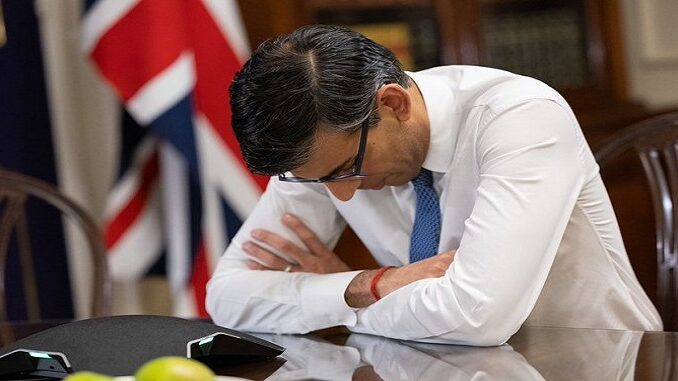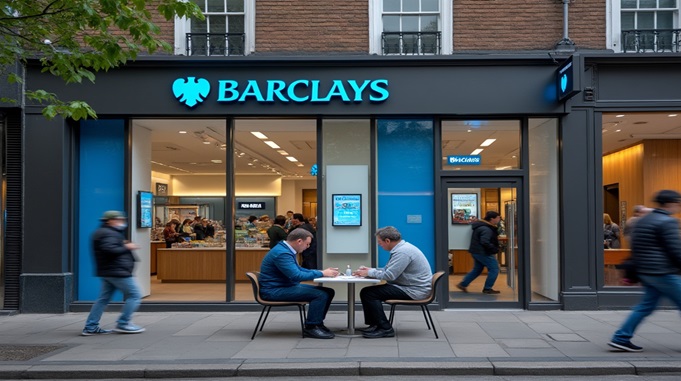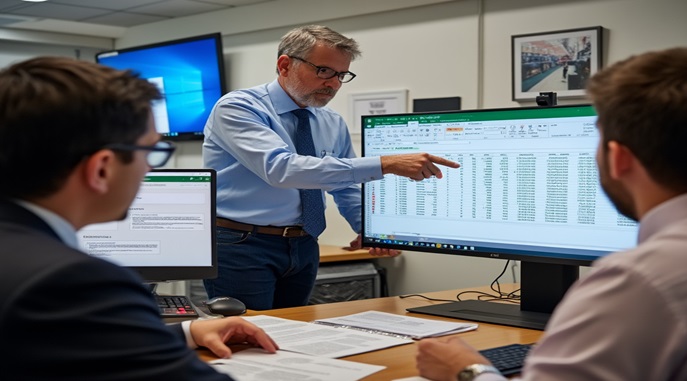
In a report today the Public Accounts Committee says HM Treasury and HM Revenue & Customs quickly put employment schemes like furlough and the SEISS for self-employed in place. But HMRC was too slow to manage problems in the support design that meant some in genuine need missed out, and to tackle fraud and error where support was given that was not actually needed.
Levels of unrecovered error and fraud are far too high: HMRC has had little success recouping the £2.3 billion incorrectly paid to employers who claimed taxpayers’ money for furlough payments for employees who continued to work. The Taxpayer Protection Taskforce is being wound up without recovering the money expected.
Gaps and lags in HMRC’s data continued to drive the problems with HMRC providing excessive support to some while others who did need it were ineligible under tax rules. HMRC must now send a clear message on recovering fraud through its tax compliance activities and must urgently increase the rate of repayments from those who overclaimed.
It must quickly address known gaps in its data without imposing excessive bureaucracy on taxpayers, so that large-scale financial interventions ensure all those in need and only those in need get assistance.
This is what Rishi Sunak said when challenged on the lack of support for many SME’s:
So here you have it @OfficialEUA, #ExcludedUK, #ForgottenLtd – we have it on camera that @RishiSunak didn't give a flying f**k about the #Excluded as you probably weren't a Tory voter. Complete and utter discrimination from the truly callous and heartless #NeverRishi. #FBEUA pic.twitter.com/uny2T7iIaK
— Excluded and Forgotten (@AndExcluded) July 29, 2022
This is a House of Commons Committee report, with recommendations to government. The Government has two months to respond.
In March 2020, in response to the COVID-19 pandemic, HM Treasury and HM Revenue & Customs (HMRC) (collectively the Departments) put in place two schemes to provide financial support for jobs adversely affected by the COVID-19 pandemic and to avoid mass unemployment. The schemes were the Coronavirus Job Retention Scheme (CJRS) for businesses and their employees, and the Self-Employment Income Support Scheme (SEISS) for the self-employed. The Departments worked together to design the schemes, with HMRC responsible for administering them.
The schemes were extended several times before closing in September 2021. In total the schemes cost £96.9 billion. The Departments distributed £68.9 billion of furlough payments through CJRS to 1.3 million employers covering 11.7 million individual jobs, and £28.1 billion over five SEISS grants to 2.9 million self-employed people. The schemes’ costs include an estimated £4.5 billion of error and fraud. The first three of the five SEISS grants paid £3.5 billion to people whose self-employed income did not reduce in 2020–21. Spending on CJRS by October 2020 included £1.5 billion paid to employers whose turnover did not fall, and who would not have cut their workforce even without the grant.
In December 2020, we published our first report on these schemes as part of our inquiry into COVID-19: Support for jobs. We commended the Departments for implementing the schemes at pace, but concluded that they could have done more to widen access to workers excluded, and to evaluate the schemes’ impacts on different groups and to estimate their costs. We raised concerns that the levels of error and fraud were still not known and called on HMRC to outline the steps it would take to recover grants from recipients who made substantial profits or were not adversely affected by the pandemic.
Conclusions and recommendations
1. The Departments do not have a good enough understanding of the impacts of the £97 billion of taxpayers’ money they spent on the COVID-19 employment support schemes. The Departments have published interim evaluations covering the delivery and impact of CJRS from March to October 2020 and of the first three of the five SEISS grants. In 2023 they plan to publish final evaluations which will also cover the remainder of the schemes through to September 2021. The Departments have said that the evaluations cover jobs and incomes protected and the schemes’ impact on the wider economy. This includes exploring links to increased levels of economic inactivity among the over 50s since the COVID-19 pandemic. Understanding other impacts of the schemes, such as business survival rates, the effects on those who were eligible and ineligible for support, and the effects of furloughed employees being able to take on a new job, could also inform future large-scale financial interventions. The Departments say they want to learn from wider international experience of providing employment support during COVID-19, but they assert that published material is limited because other countries have not reported levels of error and fraud or published evaluations.
Recommendation 1a: The Departments should, by December 2023, publish their final evaluations of CJRS and SEISS, which should cover their wider impacts including on business and people who were ineligible, economic inactivity amongst the over 50s, second jobs for furloughed staff and consequences of support for those not adversely affected by the pandemic.
Recommendation 1b: The Departments should, by December 2023, work with other relevant countries to develop a better understanding of how UK unemployment support schemes and those in other comparable countries compare and publish the results.
2. Gaps and lags in HMRC’s data contributed to the schemes providing excessive support to some, while others in need were ineligible. We have previously reported that data limitations contributed to some people being excluded from the schemes, including the newly self-employed and employed, and limited company directors who took their income as dividends. Data weaknesses also contributed to the first three of the five SEISS grants providing £3.5 billion to people whose self-employed incomes had increased during 2020–21. By October 2020, the Departments had also made CJRS payments of around £6.5 billion to employers whose turnover stayed the same or increased during the pandemic, with £1.5 billion of this going to employers who reported that they would not have made redundancies or closed permanently even without the scheme. Making Tax Digital is intended to provide more frequent and timely data on the income and expenses of self-employed people, but HMRC cannot say when this will be delivered. HMRC has also conducted a public consultation about collecting additional data, such as dividends paid to limited company directors, which could help it target support. HMRC acknowledges, however, that this could impose added burdens on customers.
Recommendation 2: The Departments should set out, by July 2023, their priorities for obtaining data which would enable the better targeting of economic support. In doing so, they should consider how they can keep burdens on customers proportionate.
3. HMRC’s performance in recovering the £2.3 billion incorrectly paid to employers claiming furlough for employees who continued to work has been woeful. When it introduced CJRS in spring 2020, HMRC recognised that there was a high risk that employers would exploit the scheme by claiming furlough for employees that continued to work. HMRC accepted that it could not prevent such claims and it intended to recover sums through post-payment compliance activity. But two years on, HMRC’s compliance activity has had little success. HMRC estimates that it paid out £2.3 billion of furlough for employees who were in fact still working. By March 2022, HMRC’s main compliance intervention targeting employers claiming furlough for working employees had yielded only £640,000, equivalent to just 0.03% of the money claimed incorrectly. HMRC now reports it is hard for its compliance teams to prove after the event that employers were claiming furlough for employees still working, particularly if they were only furloughed part-time. HMRC could have done more to collect evidence on risky claims through visits and interviews. Given the amount of furlough claimed for working employees, HMRC needs to look again at how it collects such evidence.
Recommendation 3: HMRC should set out, in its Treasury Minute response, how it will improve its ability to recover furlough claimed for employees who continued to work.
4. HMRC’s decision to close the Taxpayer Protection Taskforce in 2023–24 puts at risk the recovery of taxpayers’ money paid out as a result of error and fraud. In April 2021, HMRC set up the Taxpayer Protection Taskforce as a dedicated team of over 1,000 staff to increase its recovery of overpayments on the COVID-19 employment support schemes and the Eat Out to Help Out scheme. HMRC received an additional £100 million of funding for the Taxpayer Protection Taskforce, and it currently expects the Taskforce to recover between £525 million and £625 million. Despite these returns, HMRC plans to close the Taxpayer Protection Taskforce in September 2023 and will instead address non-compliance on the employment support schemes as part of its wider tax compliance work. We are concerned this change could lead to HMRC giving too little attention to the large sums of money outstanding on the employment support schemes. HMRC estimates indicate that between £2.0 billion and £5.1 billion of error and fraud within the schemes is likely to remain unrecovered by 2023–24. It would be unacceptable for HMRC to write-off such a large amount of taxpayer’s money. It must continue to tackle non-compliance on the schemes while it evidently remains cost-effective to do so.
Recommendation 4a: HMRC should continue compliance work on the COVID-19 employment support schemes while it remains cost-effective to do so. It should set out, in its Treasury Minute response, how it will assess the cost-effectiveness of continuing compliance work after September 2023, and how it would compare to addressing fraud on other government spending.
Recommendation 4b: HMRC should report annually in its Report and Accounts the yield it obtains from COVID-19 employment support schemes and the levels of unrecovered error and fraud until it stops its COVID19 grants compliance activity all together.
5. We are concerned that in the absence of effective criminal and civil sanctions there is little incentive for those who overclaimed COVID-19 employment support to make repayments. Despite the billions of pounds lost in error and fraud, HMRC has taken little action to punish culprits. It asserts that it limits its criminal investigations to the most serious cases of fraud committed by criminals. HMRC was undertaking just 31 criminal investigations in November 2022 compared to the almost 50,000 civil cases it had opened by October 2022. Civil cases focus on claims that HMRC considers may represent opportunistic fraud. Most employers that committed opportunistic fraud within CJRS by intentionally overclaiming were smaller companies. HMRC can penalise employers if it can prove they deliberately overclaimed, but it admitted suspicious cases are not treated as outright fraud if deliberate behaviour cannot be proved. By March 2022, HMRC had only issued penalties on CJRS totalling £1.1 million, just 0.5% of the value of overpayments it had identified. Consequently, employers who had overclaimed furlough have little incentive to voluntarily repay grants as they are unlikely to be penalised if identified by HMRC’s compliance teams.
Recommendation 5a: HMRC should increase the number of employers it penalises for making excessive claims; and incentivise other employers to repay grants they have wrongly claimed.
Recommendation 5b: HMRC should set out, in its Treasury Minute response, its estimates of the number and value of furlough claims where it suspects, but cannot prove, that employers intentionally overclaimed; and its latest data on the amounts it has recovered from those employers.
6. The Departments have yet to fully capture the lessons that must be learnt from the employment support schemes to inform future large-scale government financial interventions. We have stressed throughout our work examining the COVID-19 pandemic the vital importance of government learning lessons from its preparedness and response. It is imperative that lessons are learnt from the employment support schemes successes and their shortcomings, including the lack of support for some of those in need and the large sums lost in error and fraud. The Departments report they have prepared ‘play books’ on what they have learnt so far. The Departments’ evaluations of the schemes should provide further insights, as should acting upon our recommendation that they compare UK practice with wider international practice. Publishing all the key lessons they identify would help others in government who may need to intervene in future crises.
Recommendation 6: The Departments should, by December 2023, publish the lessons that can be learned from the schemes for large-scale financial interventions in the future, and what actions they will take as a result.
1 Impacts and targeting
1. On the basis of a report by the Comptroller and Auditor General, we took evidence from HM Treasury and HM Revenue & Customs (HMRC) (collectively the Departments) on the COVID-19 employment support schemes.1
2. In late March 2020, the government announced that it would create two employment support schemes to provide financial support to business and employees. HMRC and HM Treasury were responsible for advising ministers on the design of two schemes, the Coronavirus Job Retention Scheme (CJRS) and the Self-Employment Income Support Scheme (SEISS). HM Treasury led on policy design and HMRC led on administrative design and then the implementation and administration of the schemes. CJRS provided grants directly to businesses where the employer had chosen to furlough employees.2 Initially employees could not work at all for their employer but were free to get a new job. From July 2020, employees could work part-time, with their employer claiming furlough payments for unworked hours.3 SEISS offered a grant payment to self-employed individuals whose business was adversely affected by the pandemic.4
3. In December 2020 we published our first report on the schemes. We commended the hard work of both Departments and their staff in implementing the schemes at pace and ensuring that help got to people quickly. However, we concluded the Departments could have done more to widen access, as up to 2.9 million workers may have been excluded from the initial phases of the schemes. We were also concerned that the Departments had only undertaken limited evaluation of the impacts of the schemes on different groups and had not estimated their total costs or the levels of error and fraud. We called on HMRC to outline the steps it would take to recover grants from recipients who made substantial profits or were not adversely affected by the pandemic.5
4. After we reported, the government extended CJRS to cover April to September 2021, and made the final two SEISS grants available for February to September 2021. In total the schemes cost £96.9 billion. The Departments distributed £68.9 billion of furlough payments through CJRS to 1.3 million employers covering 11.7 million individual jobs, and £28.1 billion across five SEISS grants to 2.9 million self-employed people.6
The impact of the schemes
5. We asked the Departments how they had measured the success of the schemes and what this showed. They told us they had published interim evaluations of both schemes and would publish final evaluations in due course. They said the interim evaluations, which covered the delivery and impact of CJRS for the period March 2020 to October 2020 and the first three of the five SEISS grants, showed that the schemes had achieved their objective and that the “vast majority of people who needed assistance from the schemes were able to access them”.7 The Departments told us that the evaluations have considered: the jobs directly protected by the schemes; incomes protected by the schemes; and the schemes’ impacts on the wider economy. The final evaluations are expected to cover all phases of the schemes up to their closure in September 2021.8
6. We asked the Departments why the CJRS interim evaluation only covered the period up to October 2020 and why, given more information was available, they not undertaken the evaluation to cover a more recent date. The Departments told us that they evaluated the schemes based on the “best data available” and explained that there was a time lag in HMRC receiving data needed for the evaluations. They gave the example of self-assessment tax returns for 2021–22, which are needed to evaluate the final two SEISS grants but are not due from taxpayers until the end of January 2023. We therefore asked the Departments whether they were confident when the final evaluation would be complete. They told us that they were committed to completing the final evaluations and would publish these as quickly as they can in 2023. They would not commit to a month but assured us that the evaluations would be published in 2023.9
7. We also asked the Departments whether the evaluations would cover the schemes’ effects on groups who were not eligible and groups that were supported, including those on furlough who took a second job.10 The Departments committed to looking at whether the evaluations could cover the groups of people not eligible and those furloughed who took second jobs. They did not say whether the final evaluation would cover those people who claimed support but were not-adversely affected.11
8. We pressed the Departments on the schemes’ wider impacts including whether the schemes had contributed to the increasing number of business insolvencies and the increasing level of economic inactivity, given that the number of inactive people over 50 increased by almost 500,000 between October to December 2019 and October to December 2021. The Departments told us that the final evaluations would seek to look at the schemes’ impacts on inactivity within the working age population, but said there was no evidence that showed increasing inactivity was particularly related to the schemes. On insolvency, HMRC said that there had been a legal embargo on creditor insolvencies, which had created some “pent-up pressure”. HMRC considered that it was inevitable there would be an increase in creditor insolvencies following the lifting of the embargo in March 2022 and some of this was down to ordinary economic events. The Departments did not say whether their final evaluations would cover the impact of the schemes on the levels of insolvency.12
9. The Departments told us that in the longer-term they were interested in comparing outcomes from the schemes in the UK with other countries, as many other developed countries ran similar schemes but designed them in slightly different ways. For example, the Departments explained that they would like to look at whether they should have been more prepared to tolerate error and fraud by accepting self-certification of claims as some countries did. But the Departments told us that they had no way of comparing outcomes, yet as other countries had not published details about their schemes such as evaluations or measurements of error and fraud. They also told us the absence of published material did not mean that other countries did not have insights, but that they were not currently accessible and they could not guarantee that they would have been able to undertake international comparisons by the time of the final evaluations in 2023.13
The Departments’ data to assess need and verify claims
10. In December 2020 we reported that an estimated 1.1 million people were excluded from the initial phases of CJRS because HMRC did not have sufficient data to verify claims. These people comprised 0.7 million limited company directors who took their income as dividends and 0.4 million short-term or freelancer workers missing payroll. Limited company directors qualified for the furlough scheme to the extent that they paid themselves through their PAYE system. However, as HMRC acknowledged in 2020, many limited company directors opted to pay themselves a small amount in this way, and rely predominantly on dividend income.14 We received written evidence from the Association of Independent Professionals and the Self-Employed, which told us that it had presented to HM Treasury alternative proposals for how limited company directors could have been supported, but the schemes were not extended to this group.15 In December 2020 we also reported that 0.2 million newly self-employed people missed out on the first three SEISS grants because HMRC did not hold enough data about their self-employment. We recommended that the Departments should investigate whether more data within and outside of the tax system could be used to determine eligibility for currently excluded groups. The Departments responded by saying they had to balance the desire to provide support to as many people as possible, as quickly as possible, with the need to protect public funds from error and fraud. To strike this balance, they said both schemes were based around using information that HMRC already held and could verify. They also said that as the schemes evolved, they were able to extend support to some people including to those who had recently started employment and parents and reservists.16
11. Weaknesses in the Departments’ data also contributed to the schemes providing support to taxpayers whose incomes were not significantly affected by the COVID-19 pandemic. Eighteen percent of the value of the first three SEISS grants—around £3.5 billon—was paid to people who saw their turnover increase in 2020–21 even without the grant. While around £6.5 billion of furlough paid between March 2020 and October 2020 went to employers who saw their turnover increase or stay the same, of which £1.5 billion was paid to employers who said they would not have made redundancies or closed permanently without CJRS.17
12. We asked the Departments whether they now knew what data they were missing and what they needed to collect to allow them to be better prepared in future. HMRC told us that since the schemes had closed it had run a public consultation on whether to collect additional data from taxpayers that are not essential to administer tax but might be useful in the future for the Departments to provide and target support. The consultation asked whether data on dividends should identify how much had been earned from a director’s own company and how much from other sources. It also asked whether employers should provide data on where in the country their employees work and whether businesses should provide data on the sector of the economy they work in. HMRC said the advantages of the additional data would need to be weighed against the burdens placed on those who would supply the data. The consultation is now closed and HMRC said it was for Ministers to decide on changes.18
13. In December 2020 we reported that the age of HMRC’s Self Assessment system made it more difficult for HMRC to provide financial support for the self-employed. HMRC has an existing programme, Making Tax Digital, which will lead to self-employed people providing quarterly information on their expenses and income rather than a single annual tax return. HMRC recognised that it was taking longer than it would like to implement Making Tax Digital, but stressed that this was a key reform that would give it access to more real-time data on self-employment and would make it easier to include the self-employed in future schemes.19 In September 2021, HMRC announced that the introduction of Making Tax Digital for self-employed people would go back a year to 2024–45. We pressed HMRC on whether Making Tax Digital would be in place by 2024–25. It did not commit to 2024–25, saying it would be quite pressured for both it and software houses and small businesses to be ready in time and it would keep the delivery date under review.20
2 Error and fraud and learning lessons
The level and type of error and fraud
14. In July 2022, HM Revenue & Customs (HMRC) estimated that £4.5 billion had been paid to claimants as a result of error and fraud within the two schemes. It told us that this remained its best estimate of the extent of error and fraud within the two schemes.21 In July 2022, HMRC also estimated that most error and fraud arose within CJRS, equivalent to £3.5 billion. Of the £2.4 billion lost to fraud across the two schemes, the large majority was due to opportunistic fraud rather than organised crime.22
15. As part of our initial inquiry into fraud and error across COVID-19 support schemes in June 2021, we concluded that departments did not make enough use of counter fraud expertise when designing new initiatives to ensure they minimise losses to the taxpayers, and that gaps in information sharing was hindering efforts to prevent, detect and correct fraud and error.23 We therefore asked HMRC whether it was working with the Cabinet Office counter-fraud service to improve data sharing to tackle fraud. HMRC told us it had shared data to help the Department for Business, Energy & Industrial Strategy to manage fraud risks on bounce back loans. It also said that commercial databases—rather than other public bodies’ data—were most helpful for risk assessing cases and intervening where necessary.24 We received written evidence from CIFAS—which represents the UK’s fraud prevention community—that HMRC had not applied industry standard fraud checks when administering the schemes. It told us that HMRC did not have visibility of the largest UK database relating to first and third party fraud risk, and therefore had an incomplete picture of the fraud risk profile around each transaction. It recommended that HMRC should now introduce industry standard fraud checks.25
16. We also received written evidence from the Chartered Institute of Taxation. It told us the SEISS application process was likely to have contributed to ineligible claims. It said that, because taxpayers rather than agents had to apply for SEISS, HMRC made the application process simple and straight forward, but in doing so this had the unintended effect of encouraging ineligible claims.26
17. The main cause of error and fraud on CJRS was furlough paid to employers for employees who were still working. HMRC recognised at the start of CJRS in spring 2020 that there was a high risk that employers would exploit the scheme by claiming furlough for employees that continued to work. HMRC accepted that it could not prevent such claims and it intended to recover sums through post-payment compliance activity. HMRC’s estimates indicated that £2.3 billion was paid to employers for periods when employees were working. HMRC began deploying significant numbers of staff to its post-payment compliance activities to recover overpayments from October 2020. By March 2022, HMRC’s compliance work targeting employers who claimed furlough for working employees had closed 254 cases and had yielded only £640,000.27 We asked HMRC why it had found so few cases. It told us that it could identify working while furlough at the ‘extremes’, for example, where it could find evidence of economic activity by an employer that claimed to have furloughed 100% of their staff for 100% of the time. However, for most stages of CJRS, when furloughed employees could legitimately work part time, HMRC said it was difficult for its staff to determine whether people were working at times when their employer said they were not. There were, however, routes by which HMRC might have been able to collect more evidence, including visiting employers and regularly conducting interviews with employees.28
HMRC’s recovery of error and fraud
18. HMRC established the Taxpayer Protection Taskforce in April 2021 to increase its compliance activities on the two employment support schemes and Eat Out to Help Out.29 HMRC told us it had received £100 million to fund the cost of moving over 1,000 compliance staff from its tax compliance teams to the Taskforce so that over the medium term it would not lose yield from tax compliance. We asked whether the Taxpayer Protection Taskforce had been a success. HMRC told us that the Taskforce had allowed it to pull in staff with different expertise to work together to address non-compliance on the schemes in a coherent, focused way. HMRC said that the Taskforce was on track to recover somewhere between £525 million and £625 million from investigating error and fraud. However, this is less than HMRC’s original expectation that the Taskforce would recover £800 million to £1 billion.30 Recoveries by the Taskforce are in addition to the £536 million HMRC recovered before it established the Taskforce in April 2021.31 But as we reported in January 2023, recoveries of around £1.1 billion would only account for a quarter of HMRC’s estimate of the most likely level of error and fraud on the schemes.32
19. HMRC plans to wind up the Taxpayer Protection Taskforce between April and September 2023, returning its staff to business-as-usual tax compliance activities. It said it would continue to look at non-compliance on the COVID-19 schemes as part of a customer’s general tax compliance. There is a risk that the closure of the Taskforce could reduce the focus on COVID-19 error and fraud. HMRC’s own figures indicate that by 2022–23 between £2.0 billion and £5.1 billion of error and fraud on CJRS and SEISS is likely to remain unrecovered.33
Criminal and civil sanctions
20. The government’s policy is to pursue deliberately fraudulent behaviour, but not to penalise applicants for honest mistakes when claiming employment support. HMRC can pursue fraudsters through criminal investigations, which can result in cases going to court, or through civil actions. HMRC has the power to raise penalties of up to 100% of any overpayment where it has sufficient evidence of deliberate fraudulent behaviour, in addition to requiring the claimant to repay the amount of money that was overpaid.34
21. We have previously expressed concern about the small number of criminal prosecutions for tax fraud.35 As part of our inquiry into fraud and error across COVID-19 support schemes, we were also concerned that inconsistencies between Departments in their approaches to the consequences of fraud and error for different groups.36 We therefore asked about the number of criminal investigations HMRC had initiated into fraud on the COVID-19 employment support schemes. In March 2022, HMRC had 24 investigations underway linked to CJRS and SEISS fraud, covering suspected fraudulent claims worth £13 million.37
22. We asked HMRC why the number of prosecutions was so low and why it was not being tougher on those who had made fraudulent claims for employment support. HMRC told us that its approach was broadly the same as it applied to the tax system, where it used civil means to tackle fraud, including penalising people who have committed deliberate fraud and giving penalties for deliberate behaviour, and it reserved the right to conduct a criminal investigation and to prosecute people if it believed that this was the best way of tackling fraud. HMRC updated us on the number of criminal and civil investigations. Thirty-one criminal investigations were underway in November 2022, and HMRC had made 56 arrests.38 In comparison, it had opened 49,908 civil cases by October 2022, of which it had completed 34,860.39 Civil cases focus on opportunistic fraud. HMRC told us it that its criminal investigations were long, difficult, and very resource intensive because of the standard of evidence that it needed to reach to be able to demonstrate deliberate fraudulent behaviour. It said it reserved criminal investigation for cases that were “incredibly serious”, where its intent was to remove criminal operators as well recover money. It also said that when the schemes were open it publicised the arrests arising from its criminal investigations.40
23. While HMRC had by October 2022 exceeded its target to open 30,000 civil cases on the employment support schemes during 2020–21 to 2022–23, the level of penalties it has issued has been small compared to both the overpayments it has identified and the billions of pounds of error and fraud. By March 2022, HMRC had issued £3.5 million of penalties to those who overclaimed SEISS grants (the equivalent of 7% of total overpayments identified through its civil cases covering SEISS). For CJRS the figure was £1.1 million (0.5% of CJRS overpayments).41 We challenged HMRC about its approach on penalties as we were concerned that it does not provide an incentive for those who have identified they made an error in their claims to make a repayment. In particular, we asked HMRC why it had not issued penalties in four cases where the NAO found there were strong indications that claimants may have deliberately inflated claims beyond their entitlement.42 HMRC said that it was not enough to be suspicious or sceptical about a claim – it had to demonstrate that a person deliberately made a false claim or over an over-claim to impose financial penalties. If a case went to Tribunal it would need evidence that the false claim or over-claim was deliberate. HMRC accepted that fraud may have occurred in the four cases identified by the NAO in its report as dubious claims, but it could not tell us if the cases had been categorised as error or fraud. It also told us that its estimate of error and fraud was based on what it thought was the likeliest behaviour to have occurred rather than what it can actually prove.43 We also asked HMRC about the nature of error and fraud on CJRS and whether it varied by company size. HMRC said that big businesses were much less likely to have exhibited dishonest behaviours, or deliberately broken the rules, than smaller ones.44
Learning lessons
24. We have stressed throughout our work examining the COVID-19 pandemic the importance of government learning lessons from its preparedness and response. In July 2021, we reported that the Government’s response to the pandemic had been least effective in areas that we have repeatedly reported on, including data quality and data sharing. We recommended that that lead departments for each of the main pandemic response programmes publish post-project evaluations in a timely manner.45 In March 2022, as part of our inquiry into government preparedness for the pandemic, we highlighted the critical role of international collaboration, including for mutual learning.46 In response the government said it was working to build on the UK’s existing international collaborations including strong bilateral and multilateral relationships, to drive greater and broader collaboration on the global stage.47
25. We asked HM Treasury and HMRC what lessons they had learned that could be used in the event of the next emergency, and what they would do differently in future. They identified successes they would like to preserve, in particular, they said there had been effective close working between policy and operational staff and they had put in place a coherent end-to-end compliance approach. They also identified the need for better data to facilitate targeting of support, learning from international experience and improving how they communicated with those taxpayers selected for compliance checks.48
26. We asked HM Treasury and HMRC whether they would establish a “how to” guide for responding to future crises. They told us that for the employment support schemes they had brought together material in a “playbooks” that people can use in the future. We also asked about whether lessons learned would be set out clearly in their final evaluation. They said this was not the purpose of the public evaluation. Instead, they referred to their “playbooks”, which they said they would keep up to date.49 On error and fraud, in October 2022 HMRC updated its published summary of its approach to managing the risks of error and fraud, but this did not capture what lessons it had learnt and what should be done differently in any future crisis intervention.50 However, HMRC had previously told us it would look at drawing together its lessons from the schemes to support other parts of government that are tasked with disbursing funds at pace, such as the Household Support Fund.51








